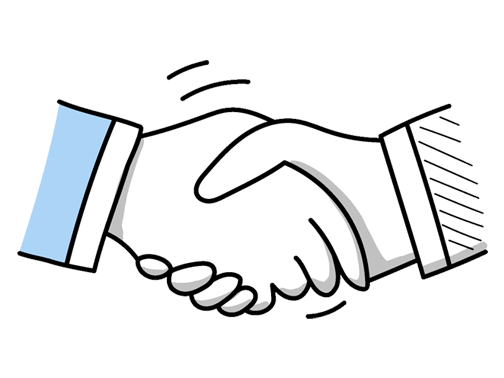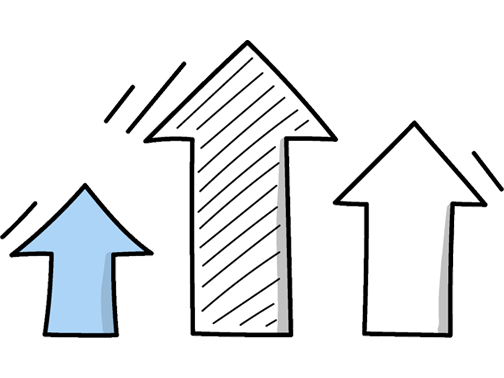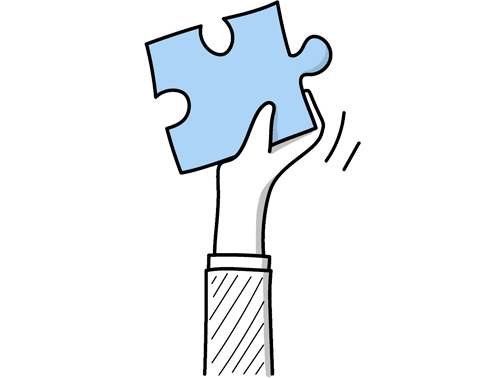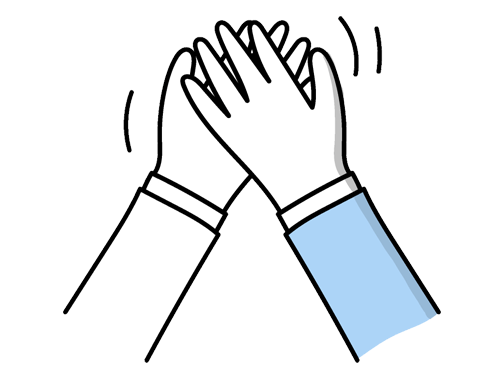Director of Compliance Interview Questions (2025 Guide)
Find out common Director of Compliance questions, how to answer, and tips for your next job interview
Practice Interviews Online - Identify your strengths and weakness in a realistic Director of Compliance mock interview, under 10 minutes
Practice Now »Director of Compliance Interview Questions
Questions like this assess your ability to translate regulatory requirements into practical actions that protect the organization. You need to clearly describe the regulation, the steps you took to implement it, and the positive impact your actions had on compliance and risk management.
Example: In my previous role, when a new data protection regulation came into force, I led a cross-departmental team to assess its impact and update our policies. We launched targeted training sessions to ensure everyone understood their responsibilities and introduced regular audits to monitor compliance. This proactive approach helped us avoid any breaches and demonstrated our commitment to protecting client information.
This interview question assesses your ability to recognize critical compliance issues and take effective action to prevent legal or regulatory breaches. You need to describe a specific risk you spotted, explain the steps you took to address it, and highlight the positive outcome of your intervention.
Example: In a previous role, I noticed gaps in our data protection processes that risked breaching GDPR. I led a cross-departmental review, updated policies, and introduced targeted staff training. This not only closed the compliance gaps but also fostered a culture of awareness, reducing incidents and ensuring our operations stayed aligned with UK regulations.
Questions like this assess your ability to measure and improve compliance programs using data and collaboration. You need to say you evaluate effectiveness through audit results and incident reports, identify gaps via root cause analysis, and engage stakeholders regularly to address issues and enhance the program.
Example: To evaluate a compliance program’s effectiveness, I look at both data trends and feedback from across teams. Reviewing incident reports alongside employee surveys helps highlight any weak spots. I also regularly meet with key stakeholders to ensure the program aligns with practical needs and evolving risks. For example, when we noticed a rise in minor policy breaches, we adapted training and communication, which improved awareness and reduced issues significantly.
Hiring managers ask this question to assess your leadership skills and ability to navigate complex regulatory environments. You need to describe a specific example where you clearly communicated the change, supported your team through challenges, and ensured full compliance.
Example: In a previous role, we faced new data protection regulations that required immediate action. I gathered the team to clarify the changes, outlined clear steps, and encouraged open dialogue to address concerns. By breaking down the process and supporting everyone, we smoothly integrated the new standards without disrupting daily operations, ultimately strengthening our compliance culture.
This question assesses your ability to manage interpersonal issues that could disrupt your team's effectiveness and the overall compliance environment. You need to say that you listen carefully to all sides, mediate to find common ground, and address conflicts quickly to keep the team focused and productive.
Example: When conflicts arise, I focus on listening carefully to everyone’s viewpoints to fully understand the issues. I then guide the conversation toward identifying shared goals and workable solutions. For example, in a previous role, addressing a disagreement early helped the team refocus and meet deadlines smoothly. By tackling problems quickly and respectfully, I help keep the team cooperative and the work environment constructive.
Hiring managers ask this question to assess your commitment to continuous learning and your proactive strategies for managing compliance risks. You need to say that you regularly monitor regulatory bodies, subscribe to industry newsletters, attend relevant training, and collaborate with experts to ensure your organization stays compliant.
Example: I make it a point to regularly review updates from regulatory bodies and subscribe to industry newsletters. Engaging with professional networks, attending relevant seminars, and having open conversations with legal experts also helps me stay sharp. For example, when GDPR adjustments were announced, this approach allowed me to quickly translate changes into practical compliance measures without disruption. Staying informed is an active, ongoing process for me.
Questions like this assess your understanding of managing complex, evolving regulatory environments across different countries. You need to say that you stay informed through continuous research and expert consultations, implement robust monitoring systems, and foster a culture of compliance throughout the organization.
Example: To keep the organization aligned with international regulations, I foster a culture of continuous learning and open communication. We regularly review updates from regulatory bodies and embed these changes into our policies. For example, when new data privacy laws emerged, we swiftly adjusted our processes and trained teams accordingly. Staying proactive and collaborative ensures compliance becomes part of everyone’s daily routine, not just a checkbox.
Interviewers ask this to see how you manage workload and ensure team efficiency. You need to explain that you assess task urgency and importance, then assign duties based on each team member’s strengths and capacity.
Example: I start by assessing the urgency and impact of each task, then assign them based on team members’ strengths and workload. I keep communication open to adjust priorities as needed. For example, when handling a regulatory update recently, I delegated research to a compliance officer while I focused on integrating the changes into policy, ensuring we met the deadline without compromising quality.
This question assesses your ability to lead a compliance team effectively by aligning their efforts with the organization's goals. You need to explain how you clearly communicate the vision, motivate your team through recognition and support, and monitor progress by adapting your leadership to overcome challenges.
Example: To lead a compliance team effectively, I focus on sharing a clear vision that ties our work to the company’s bigger picture. I encourage open dialogue and celebrate small wins to keep morale high. Regular check-ins help track progress and spot issues early, allowing me to adjust my approach as needed. For example, when deadlines tighten, I shift to a more hands-on style to support the team through challenges.
Interviewers ask this question to assess your ability to effectively communicate complex compliance information to diverse audiences within the organization. You need to explain how you adjust your language and detail level depending on the management tier, ensuring clarity by simplifying concepts for non-experts and providing relevant examples of past success in doing so.
Example: When communicating with senior management, I focus on strategic impact and concise insights, while with operational teams, I provide more detailed explanations and practical guidance. For example, when rolling out new compliance procedures, I presented high-level risks to executives but offered step-by-step support to managers. This approach ensures everyone understands their role clearly, fostering effective collaboration across all levels.
Questions like this assess your ability to apply recognized frameworks and structured methods to identify and manage compliance risks effectively. You should explain which frameworks (like COSO or ISO 31000) you use, how you identify and prioritize risks through techniques like audits or interviews, and how you translate those findings into actionable compliance strategies.
Example: When conducting compliance risk assessments, I rely on established frameworks like COSO and ISO 31000 to ensure a thorough review. I start by mapping out all potential regulatory touchpoints, then assess their impact and likelihood to prioritize effectively. This helps me tailor compliance strategies that are both practical and targeted—like focusing on data protection risks early on to avoid costly breaches down the line.
Questions like this assess your awareness of industry-specific compliance risks and your strategic approach to managing them. You need to show that you understand the evolving regulations, propose practical solutions to mitigate risks, and explain how you would align compliance efforts with the company’s goals.
Example: In the UK’s evolving regulatory landscape, staying ahead of data protection and anti-bribery rules is crucial. I focus on building strong cross-department collaboration to identify risks early and embed compliance into everyday operations. For example, integrating regular training with practical scenarios helps teams see compliance as a business enabler rather than a hurdle, ensuring both legal adherence and support for our strategic goals.
What they want to understand is how you approach challenging compliance problems and ensure resolution while minimizing risk. You need to clearly describe the issue, your analysis, actions taken, and the positive outcome or lessons learned.
Example: In a previous role, we faced a data privacy challenge involving ambiguous regulations across multiple jurisdictions. I led a cross-functional team to interpret the requirements, engaged with external legal experts, and developed a clear compliance framework. This not only ensured we met regulatory obligations but also built trust with stakeholders by demonstrating proactive risk management. It was a valuable lesson in balancing complexity with practical solutions.
Hiring managers ask this question to assess your ability to maintain transparency and alignment within your team, which is crucial for effective compliance management. You need to say that you use regular meetings, clear documentation, and open channels for feedback to promote consistent communication.
Example: I focus on fostering open dialogue and regular check-ins, so everyone stays aligned and feels comfortable raising concerns. Using clear, accessible language helps avoid confusion, especially with complex regulations. For example, in my last role, weekly briefings combined with an open-door policy encouraged collaboration and swift resolution of issues, making sure compliance remained a shared priority across the team.
Hiring managers ask this to assess your communication skills and ability to ensure team understanding of critical policy updates. You need to describe a clear example where you explained the change, addressed concerns, and confirmed compliance.
Example: In a previous role, when a key data protection policy was updated, I organised focused workshops and sent clear summaries tailored to each team’s impact. I encouraged open dialogue to address concerns early, ensuring everyone understood not just the changes but their practical implications. This approach helped smooth adoption and maintained strong compliance standards across the organisation.
Hiring managers ask this to gauge your ability to create long-term, practical compliance strategies that adapt to changing regulations. You need to explain how you assess risks, implement ongoing training, and monitor processes to maintain effectiveness over time.
Example: To ensure compliance solutions last and work well, I focus on understanding the organisation’s culture and challenges first. Then, I design clear, practical policies with input from across teams, making sure everyone feels ownership. Regular training and open communication keep the message alive, while ongoing monitoring helps spot issues early. For example, in my last role, these steps reduced compliance breaches by 30% within a year.
This interview question aims to assess your problem-solving skills and your ability to create effective, compliant strategies. You need to explain how you identify the root causes of compliance issues, develop tailored and practical solutions, and continuously evaluate and improve them based on results.
Example: When facing compliance challenges, I start by digging into the underlying issues to understand what’s really going on. From there, I brainstorm solutions that fit both the regulatory landscape and the company’s needs, often collaborating across teams. Once implemented, I keep a close eye on how they perform and stay open to feedback, tweaking the approach as necessary. For example, revising internal audit processes after pilot feedback helped improve accuracy and staff buy-in.
Employers ask this question to see how you integrate compliance with business goals without hindering progress. Your answer should show that you assess risks carefully, communicate with stakeholders to find workable solutions, and stay flexible to adapt to changing regulations and business needs.
Example: When addressing challenges, I start by carefully evaluating the potential risks alongside the business goals to understand the full picture. Engaging with stakeholders early helps align compliance requirements with practical needs. I remain open to creative solutions that safeguard the company without hindering progress—for example, working with teams to streamline processes that meet regulations while supporting growth initiatives. Balancing these aspects is key to sustainable success.
Hiring managers ask this question to see if you can align risk management with business goals, ensuring compliance supports growth rather than hinders it. You need to say that you collaborate with leadership to embed risk assessments into strategic planning and use findings to guide decision-making and resource allocation.
Example: To ensure risk assessments shape business strategy, I embed them early in planning discussions, aligning findings with the company’s goals. For example, at my previous role, we used compliance insights to adjust product launches, balancing innovation with regulatory realities. This ongoing dialogue between risk and strategy helps the business stay proactive, not reactive, turning potential challenges into opportunities for growth.
Hiring managers ask this question to see if you can make complex regulatory issues understandable to those without a compliance background, ensuring everyone is informed and aligned. In your answer, explain how you simplify technical language into clear, relatable terms and adjust your communication style based on the audience’s knowledge while emphasizing the real-world impact of compliance.
Example: When explaining complex compliance issues, I focus on breaking down the details into clear, relatable terms, avoiding jargon. I tailor the message to each audience’s background, using real-life examples to show the practical impact. For example, when discussing data protection changes, I highlighted how it affects day-to-day customer interactions, ensuring everyone understood why compliance matters and what actions to take. This approach builds understanding and engagement.
Interviewers ask this question to see how you identify and manage the most critical compliance risks efficiently, ensuring resources are used where they have the greatest impact. You should explain that you assess risks by impact and likelihood, prioritize high-risk areas, and allocate your team and budget accordingly, while continuously monitoring data to adjust your focus as needed.
Example: When managing compliance risks, I focus first on understanding which risks could cause the most significant harm to the organisation or its reputation. By assessing both their likelihood and potential impact, I can prioritise effectively. Resources are then directed where they’re needed most, often guided by real-time data and regular reviews. For example, if regulatory changes arise, I quickly shift focus and resources to ensure we stay ahead.
What they want to understand is how you proactively spot and evaluate potential compliance issues to protect the organization. You need to explain that you use a combination of risk assessments, audits, employee feedback, and regulatory updates to identify risks, then prioritize them based on impact and likelihood.
Example: To identify and assess compliance risks, I combine thorough policy reviews with regular staff consultations to spot gaps early. I also analyse data trends and monitor regulatory updates closely. For example, in my last role, ongoing dialogue with teams helped uncover a reporting issue before it became a problem, allowing us to address it proactively. This approach ensures we stay ahead while fostering an open compliance culture.
This interview question assesses your ability to manage challenges and influence others while upholding compliance standards. You need to say that you listen to concerns, communicate the importance clearly, and work collaboratively to find practical solutions that align with organizational goals.
Example: When facing resistance to compliance initiatives, I focus on understanding the concerns behind it. Often, people resist change due to uncertainty or lack of clarity. I engage teams through open dialogue, explaining the reasons and benefits, and show how compliance supports their work. For example, in a previous role, by involving staff early and addressing their feedback, we turned initial pushback into strong support.
Employers ask this to see how you weigh risks and uphold regulations under pressure. You need to describe a specific situation, explain your decision-making process, and highlight the positive outcome or lessons learned.
Example: In a previous role, I had to halt a lucrative client project when it didn’t meet new regulatory standards. It was tough because of the potential revenue impact, but I prioritized compliance to protect the company’s long-term reputation. I worked closely with the team to adjust the project, ensuring it aligned with regulations without compromising quality. This approach reinforced trust internally and with our stakeholders.
Interviewers ask this to see how you build a strong, knowledgeable team that stays updated with regulations and improves continuously. You need to say you use personalized coaching, regular training, and open communication to help each team member grow and stay engaged.
Example: I focus on understanding each team member’s strengths and career goals, then tailor opportunities to help them grow. Regular one-on-one check-ins create space for honest feedback and support. I also encourage learning through real projects and relevant training — like when I helped a junior officer lead a cross-departmental audit, boosting their confidence and skills. Building trust and ongoing dialogue are key to developing a strong, motivated compliance team.
Ace your next Director of Compliance interview with even more questions and answers
Common Interview Questions To Expect
The interviewer is looking for a brief overview of your professional background, skills, and experiences that are relevant to the role of Director of Compliance. Be concise and focus on key accomplishments.
Example: Sure! I have over 10 years of experience in the compliance field, with a strong background in developing and implementing compliance programs. I have a proven track record of ensuring regulatory requirements are met and mitigating risks for the organization. I am excited about the opportunity to bring my expertise to your team.
The interviewer is looking for insight into your long-term career aspirations, your motivation, and how this role fits into your overall career plan. Be honest and specific about your goals.
Example: My career goal is to continue growing in the field of compliance and eventually become a Chief Compliance Officer. I am motivated by the opportunity to ensure ethical business practices and regulatory compliance within organizations. This role aligns with my goal of making a positive impact on the business world through effective compliance management.
The interviewer is looking for insight into your decision-making process, career goals, and how your previous experience has prepared you for your current role. Be honest and highlight any relevant skills or experiences gained from your previous career.
Example: I decided to change career paths because I wanted to challenge myself and pursue a role that aligned more closely with my passion for ensuring regulatory compliance. My previous experience in risk management and legal analysis provided me with a strong foundation for transitioning into a Director of Compliance role. I believe this change has allowed me to further develop my skills and make a positive impact in the field.
The interviewer is looking for examples of how you prioritize tasks, manage your time effectively, and handle stress in a high-pressure environment. Be prepared to provide specific examples from your past experiences.
Example: Yes, I am definitely able to handle multiple responsibilities at once. In my previous role as a Compliance Manager, I was responsible for overseeing various regulatory requirements, conducting audits, and training staff on compliance procedures all at the same time. I prioritized tasks based on deadlines and importance, ensuring everything was completed efficiently.
The interviewer is looking for insight into your personal values, work ethic, and what drives you to succeed. Answers should demonstrate passion, dedication, and alignment with the company's goals.
Example: What motivates me is the opportunity to ensure that our company is operating ethically and in compliance with regulations. I am driven by the challenge of navigating complex regulatory environments and finding solutions to ensure our business is successful. Ultimately, my motivation comes from knowing that my work is making a positive impact on the organization.
Company Research Tips
The company's website is a goldmine of information. Look for details about the company's mission, values, culture, products, and services. Pay special attention to any information related to compliance, such as their compliance policy, code of conduct, or any recent news about regulatory issues. This will give you a sense of the company's approach to compliance and any challenges they may be facing.
Tip: Don't just stick to the main pages. Dig deeper into blog posts, press releases, and annual reports if available. These can provide valuable insights into the company's operations and strategic direction.
LinkedIn can provide valuable insights into the company's structure, key employees, and recent updates. Look for profiles of current and former employees in similar roles to get a sense of the skills and experience the company values. Also, check the company's LinkedIn page for updates, posts, and comments which can give you a sense of the company's culture and recent developments.
Tip: Use LinkedIn's advanced search features to find employees in similar roles. Look at their skills, endorsements, and recommendations to get a sense of what the company values.
Look for recent news articles, industry reports, and analysis related to the company and the compliance field. This can give you a sense of the regulatory environment the company operates in, recent developments in the field of compliance, and how the company is perceived in the industry.
Tip: Use Google News or industry-specific news sites to find recent articles. Look for analysis or commentary from industry experts to get a deeper understanding of the issues.
As a Director of Compliance, you'll need to be familiar with the regulatory bodies that oversee the company's operations. Visit their websites to understand their regulations, recent changes, and any relevant news or updates. This will help you understand the regulatory landscape the company operates in and any potential challenges they may be facing.
Tip: Look for sections on the website dedicated to guidance, resources, or news. These can provide valuable insights into the regulator's priorities and expectations.
What to wear to an Director of Compliance interview
- Dark coloured suit
- White or light blue shirt
- Conservative tie
- Polished dress shoes
- Minimal jewellery
- Neatly groomed hair
- Clean, trimmed nails
- Light makeup for women
- Subtle perfume or cologne
- Carry a professional bag





